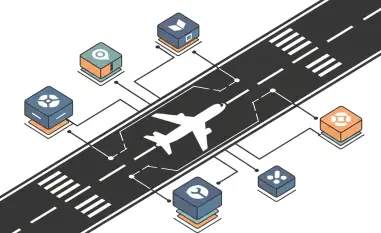In today’s interconnected world, the conversation around artificial intelligence (AI) and its implications on global security is unavoidable. AI deepfakes, which involve using advanced machine learning to create highly realistic but forged audio and video content, are emerging as a paramount concern. These fake renditions have the potential to disrupt not only personal reputations but also international relations and cybersecurity. With these concerns in mind, this roundup delves into expert insights and strategic opinions on the ever-evolving threat posed by AI deepfakes to global communication systems.
The Intersection of AI and Communication Security
Experts unanimously agree that AI’s rapid advancement is reshaping traditional security frameworks at an unprecedented pace. As AI capabilities become more sophisticated, systems designed to safeguard global communications are under increasing pressure. Highlighting the significance of deepfakes within this dynamic, professionals underscore the potential of these technologies to harm diplomatic exchanges and expose vulnerabilities in international cybersecurity measures. Previous debates have identified the urgent need for understanding and addressing these threats to protect global communications.
A New Challenge: AI-Enabled Impersonation Threats
In the realm of impersonation threats, AI is revolutionizing traditional methods, creating unprecedented challenges for cybersecurity. Instances such as the attempted impersonation of U.S. Secretary of State Marco Rubio exemplify the potential destructiveness of AI-powered deception. During this episode, the State Department issued alerts to diplomats, signaling the severe threat such attacks pose to national and international security. Despite initial unsophistication, these impersonation attempts highlight evolving adversarial strategies and inadequacies in current cybersecurity defenses. The need for bolstering these measures against AI-enhanced threats is clearer than ever.
Tech Innovations and Their Double-Edged Sword: Opportunities and Risks
While technological advancements like deepfakes present opportunities for innovation in communication strategies, the associated risks are substantial. On the one hand, these technologies offer the promise of streamlined and enhanced communications. On the other hand, they also open doors for misuse, as seen with impersonations of high-ranking officials. Industry leaders recognize the delicate balance between embracing AI’s potential and the necessity of implementing robust risk management frameworks to mitigate its inherent threats. This balance is critical for safeguarding communication channels.
The Global Landscape: Regional Variations and Future Trajectories
Responses to AI-driven threats vary across regions, reflecting differing regulatory environments and risk perceptions. Some regions are proactive, developing comprehensive approaches to counteracting AI-related security threats, while others lag, potentially compromising their communication infrastructures. As traditional communication channels face disruption from AI innovations, experts highlight the dynamic industry landscape and call for forward-looking insights to predict AI’s trajectory in communication security. Challenging prevailing assumptions, this area remains ripe for ongoing exploration and strategic foresight.
Beyond Technology: Strategic and Ethical Responses to AI Deepfakes
Tackling AI threats transcends purely technical solutions, encompassing strategic, ethical, and policy-driven responses. Experts suggest a multifaceted approach combining legal measures, industry standards, and ethical considerations to mitigate AI deception’s impact. Opinions converge on the necessity for global cooperation in establishing frameworks that incorporate ethical imperatives and strategic foresight. Such initiatives promise not only to counteract current threats but also to preemptively address future challenges, ensuring security and ethical standards are upheld.
Proactive Measures and Strategic Insights
Summarizing insights from various domains, it is evident that effective mitigation of AI-related threats requires a comprehensive strategy. Policymakers and industry leaders must prioritize developing adaptable frameworks capable of responding to the fast-evolving AI landscape. Practical strategies involve adopting advanced detection technologies, enhancing digital literacy, and fostering international collaboration to ensure robust communication security. With actionable policies in place, the integrity of communication channels can be preserved despite AI’s disruptive potential.
The Path Forward: Future Challenges and Considerations
Acknowledging AI’s profound influence on communication security, stakeholders must actively anticipate future innovations and challenges. Historical incidents like the impersonation attempt against Marco Rubio underscore the importance of vigilance and readiness to confront AI-driven risks. As technology continues to advance, ongoing adaptations in security strategies and ethical considerations are paramount. By embracing a proactive stance and strategic foresight, institutions can effectively navigate the evolving threats posed by AI deepfakes, securing both communications and trust on a global scale.













